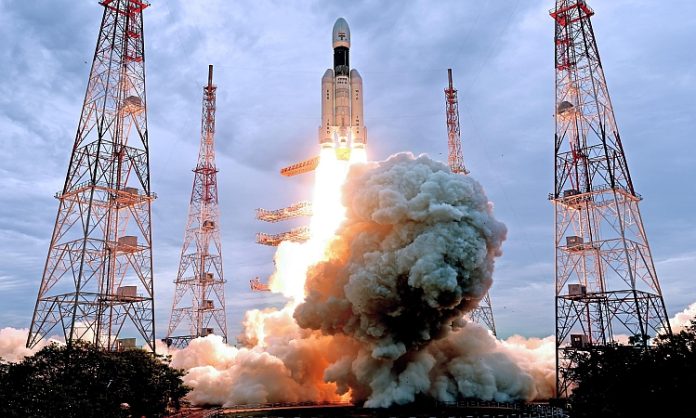New Delhi: India is poised to take on its rival China on the Moon. If Chandrayaan-3 mission succeeds, India will become the fourth nation, after United States, Russia and China, to land and ride the lunar surface.
Though global space industry experts feel that China is way ahead of India with regard to carrying out its exploration on the moon’s surface. While India is awaiting smooth landing of its lander and rover on the far side surface of the moon, China has already conducted its three-step lunar exploration (orbit, land and return) since it launched its mission in 2016.
Also Read: ISRO’s lunar mission: Chandrayaan-3 lifts off, landing on Aug 23-24
Indian Space Research Organisation (ISRO) launched its first moon mission Chandrayaan-1 in October 2008 using its light rocket Polar Satellite Launch Vehicle (PSLV) and the second mission on July 22, 2019 with the Geosynchronous Satellite Launch Vehicle-Mk III now renamed as LVM3. The latest moon mission is a follow up of the failed Chandrayaan-2 mission in 2019 when the lander named Vikram crashed on to the Moon’s surface.
According to the prestigious journal Nature, India’s moon mission reflects the country’s strategy to be a part of an elite group of nations to maintain a long-term presence on the Moon.
However, China, which currently leads the space race in comparison to India, has made rapid and innovative progress, manifested by a steady improvement in space infrastructure, like the three-step lunar exploration programme (orbit, land and return) and landing beyond the earth-moon system by Tianwen-1.
Also Read: ISRO’s Chandrayaan-3 to lift off on lunar mission on July 13
Achieving relay communications through the Queqiao satellite, the Chang’e-4 lunar probe performed humanity’s first soft landing on the far side of the Moon, and conducted a roving exploration. The Chang’e-5 lunar probe brought back 1,731 grams of samples from the Moon in December 2020, marking China’s first successful extraterrestrial sampling and return, and the completion of its three-step lunar exploration programme.
Space industry experts say that China will continue with lunar and planetary exploration. According to the white paper released by China, the country will launch the Chang’e-6 lunar probe to collect and bring back samples from the polar regions of the Moon, launch the Chang’e-7 lunar probe to perform a precise landing in the Moon’s polar regions and a hopping detection in the lunar shadowed area and complete R&D on the key technology of Chang’e-8, and work with other countries, international organisations and partners to build an international research station on the moon.
Also Read: After OneWeb launch, ISRO eyes solar & lunar missions next year
In May this year, China announced plans to send a manned mission to the Moon by 2030 for lunar scientific exploration, amid its deepening space race with the West and India. The overall goal is to achieve China’s first manned landing on the Moon by 2030 and carry out lunar scientific exploration and related technological experiments, Xinhua news agency reported.
In 2021, China and Russia announced plans to set up an International Lunar Research Station. “The Moon is being used as a stepping stone to places like Mars. It’s a great place to test out deep space technologies,” said Lin Xiqiang, Deputy Director of the China Manned Space Agency (CMSA).
Also Read: ISRO awaits scrutiny of object found Australian offshore to verify
India has a lot of catching up to do with China but if Chandrayaan-3 tastes success, it will be a great feat for the country’s space dream. The moon lander, which is yet to be named, is expected to make a soft-landing near the South Pole of the Moon on August 23 or 24. It will descend to the Moon from a height of about 100 km from the Moon’s surface.
The soft landing is a tricky issue as it involves a series of complex manoeuvres consisting of rough and fine braking. Subsequent to the soft landing, the six-wheeled rover will roll out and carry out experiments on the lunar surface for a period of one lunar day which is equal to 14 Earth days.
Also Read: India to witness total lunar eclipse on Nov 8; visible from all over
The life of the payloads carried by the propulsion module post ejection of the lander is between three and six months. On the other hand, the mission life of the lander and the rover is 1 Lunar day or 14 earth days, according to ISRO.




